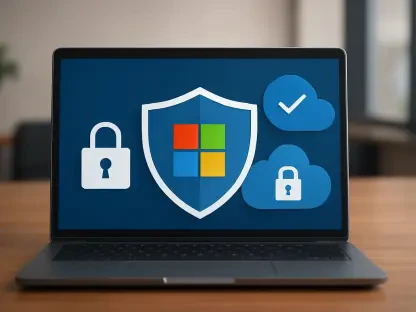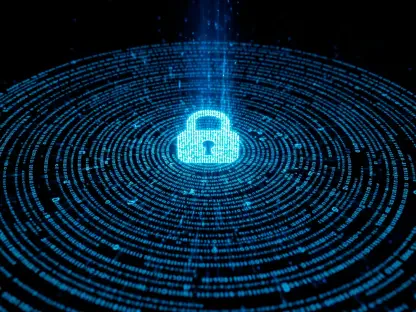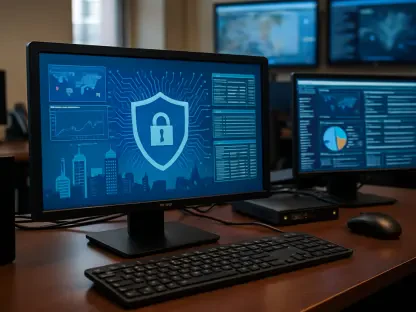As the digital landscape evolves at a breakneck pace, the specter of quantum computing looms large over U.S. defense systems, threatening to dismantle the very encryption that safeguards national security, spurring a groundbreaking partnership between SEALSQ Corp. (NASDALAES) and Trusted Semiconductor Solutions (TSS). Announced on October 9, 2025, this alliance aims to develop “Made in US” quantum-resistant secure chips. Far beyond a mere corporate collaboration, this partnership represents a critical stride toward protecting vital digital infrastructures from the unprecedented risks posed by cryptographically relevant quantum computers (CRQCs). With the potential to crack traditional encryption methods, quantum advancements could expose classified military communications and jeopardize strategic operations. The urgency to counter such threats through post-quantum cryptography (PQC) has never been more evident, positioning this partnership as a pivotal force in reshaping defense readiness. Investor confidence in this initiative is palpable, as evidenced by SEALSQ’s stock surging 18% to $5.15 per share on the announcement day, marking a nine-month high. This market reaction highlights the profound implications of quantum-resistant technology for the future of secure communications. As the U.S. strives for technological sovereignty amidst global supply chain uncertainties, the collaboration between SEALSQ and TSS could redefine the standards of digital trust and fortify national defense against an invisible yet imminent threat.
Confronting the Quantum Threat
The rapid advancement of quantum computing is no longer a theoretical concern but a tangible challenge that could upend global security frameworks, particularly for the U.S. defense sector. The concept of “Q-Day,” when quantum systems gain the ability to break widely used encryption protocols like RSA and ECC, is approaching faster than many anticipated. Such a breakthrough would have catastrophic consequences, potentially exposing sensitive military data, disrupting secure communications, and undermining strategic operations. The development of quantum-resistant technologies through PQC has thus become a non-negotiable priority. SEALSQ and TSS are at the forefront of this battle, focusing on solutions that can withstand the computational power of CRQCs. Their approach prioritizes embedding quantum-safe algorithms directly into hardware, a method that offers a more robust defense compared to software-based alternatives. This shift toward hardware-centric security is seen as essential for high-stakes environments where even a single breach could have dire national consequences. The urgency of this mission is underscored by the recognition that adversaries worldwide are also racing to harness quantum capabilities, making the timely deployment of resistant technologies a matter of geopolitical significance.
Beyond the immediate risks, the broader implications of quantum computing on digital infrastructure cannot be overstated, as sectors beyond defense, including finance and healthcare, also stand vulnerable to encryption failures. The partnership between SEALSQ and TSS aims to address this systemic threat by pioneering chips that establish a “root of trust” at the hardware level, ensuring tamper-resistant protection for critical systems. This hardware focus aligns with an industry-wide consensus that software solutions alone are insufficient for the highest security needs, as they can be susceptible to remote attacks or updates that introduce vulnerabilities. The PQC market, driven by these concerns, is projected to grow exponentially, with estimates suggesting a leap from millions to trillions in value over the next decade. This economic potential, combined with the strategic imperative to safeguard national interests, places the alliance in a pivotal position to influence not only defense but also commercial applications of quantum-resistant technology. As global competition intensifies, the ability to stay ahead of quantum threats will likely define technological leadership in the coming years, making initiatives like this one a cornerstone of future security strategies.
Domestic Manufacturing as a Strategic Necessity
The commitment to “Made in US” production at the heart of the SEALSQ-TSS partnership transcends mere branding, emerging as a fundamental pillar of national security in an era marked by supply chain fragility and geopolitical tensions. Relying on foreign semiconductor manufacturing for critical defense technologies poses an unacceptable risk, particularly in times of international conflict or economic disruption. A sudden halt in chip supplies from overseas could cripple military systems dependent on secure communications, leaving the U.S. exposed at a critical juncture. By prioritizing domestic production, this alliance mitigates such vulnerabilities, ensuring that the foundational components of defense infrastructure remain under national control. This approach not only strengthens digital sovereignty but also aligns with broader policy objectives to rebuild and fortify U.S. technological independence. The strategic importance of this move is evident in the context of past global chip shortages, which highlighted the dangers of over-reliance on external sources for essential hardware.
Further reinforcing the significance of this domestic focus is TSS’s designation as a Category 1A Trusted-accredited firm, a credential that enables the partnership to engage with classified projects and adhere to stringent federal standards such as FIPS 140-3 and Common Criteria. This accreditation is more than a formality; it establishes a level of trust with government entities, facilitating access to high-security contracts that demand the utmost assurance. Compliance with these rigorous certifications positions the alliance as a preferred supplier for agencies tasked with protecting national interests, from military operations to intelligence networks. Additionally, the emphasis on U.S.-based manufacturing dovetails with legislative efforts like the CHIPS and Science Act, which seeks to bolster local semiconductor capabilities through significant investment and incentives. By aligning with such initiatives, SEALSQ and TSS contribute to a broader movement to reduce exposure to international supply chain risks, ensuring that the technologies safeguarding the nation’s defense are produced within its borders and under its oversight.
Innovating Through a Phased Development Plan
The SEALSQ-TSS collaboration is underpinned by a meticulously structured three-phase roadmap designed to deliver both immediate results and long-term innovation in the realm of quantum-resistant security. In the initial phase, the focus is on integrating SEALSQ’s QS7001 secure element with TSS platforms, with a launch scheduled for mid-November 2025. This rollout will be accompanied by commercial development kits, enabling early adopters—potentially defense contractors and government labs—to test and refine the technology within existing systems. Such hands-on engagement is crucial for gathering real-world feedback and ensuring the chips meet the practical demands of high-security environments. This short-term objective serves as a proof of concept, demonstrating the viability of hardware-based PQC solutions while building momentum for broader adoption. The emphasis on tangible deliverables at this stage reflects a pragmatic approach to addressing urgent security needs without delay, setting a foundation for subsequent advancements.
Looking beyond the initial launch, the mid-term phase of the partnership shifts toward co-developing PQC-embedded integrated circuits (ICs) specifically tailored for government certifications. Achieving compliance with strict federal protocols is non-negotiable for securing contracts within the defense sector, where failure to meet standards can exclude even the most technologically advanced solutions from consideration. This phase prioritizes scalability and regulatory alignment, ensuring that the developed technologies can be seamlessly integrated into military and governmental frameworks. Meanwhile, the long-term vision centers on pioneering next-generation architectures, such as Chiplet-based Hardware Security Modules (CHSMs). These modular designs offer flexibility and cost-efficiency, allowing for customized security solutions that adapt to evolving threats. This forward-thinking strategy ensures the alliance remains at the cutting edge as quantum computing capabilities advance, potentially extending applications beyond defense into sectors like IoT and automotive. By balancing immediate impact with visionary goals, this phased plan provides a comprehensive blueprint for securing digital assets against future uncertainties.
Gaining a Competitive Advantage in a High-Stakes Market
In the intensely competitive arena of quantum-resistant security, the partnership between SEALSQ and TSS has established a significant edge through a combination of technological innovation and strategic positioning. TSS’s deep-rooted connections within the U.S. defense ecosystem, coupled with its trusted status, provide unparalleled access to a market characterized by high barriers to entry. Government contracts in this space often require years of relationship-building and a proven track record of reliability—advantages that TSS brings to the table. Competitors lacking similar accreditations or domestic manufacturing capabilities find themselves at a distinct disadvantage, unable to meet the stringent requirements for handling classified projects. This unique positioning not only enhances the alliance’s prospects for securing lucrative deals but also sets a new standard for what is expected in the realm of high-security technology development. As the demand for quantum-resistant solutions grows, this partnership is poised to lead the charge in shaping industry benchmarks.
Moreover, the market implications of this collaboration extend beyond immediate competitors to influence broader procurement trends within the defense and government sectors. The shift toward hardware-centric security, as exemplified by SEALSQ’s focus on embedding quantum-safe algorithms into chips, is likely to marginalize providers offering software-only PQC solutions. Generic semiconductor manufacturers, without specialized capabilities in quantum resistance, risk obsolescence as security needs evolve. The alliance’s ability to offer integrated hardware-software solutions tailored for high-assurance applications positions it as a frontrunner in a niche yet rapidly expanding field. Financially, the partnership has already demonstrated its potential, with SEALSQ reporting a robust sales pipeline of $145 million for 2026-2028 and anticipating significant revenue growth. This investor optimism, reflected in substantial stock gains, suggests a strong market belief in the transformative impact of quantum-resistant chips, not just for defense but for a range of critical industries facing similar threats.
Building a Resilient Digital Defense Legacy
Reflecting on the strides made through the SEALSQ-TSS partnership announced on October 9, 2025, it’s clear that a significant milestone was achieved in the journey toward quantum-resistant security for U.S. defense. The collaboration tackled an existential threat head-on, leveraging hardware-based solutions to fortify digital trust at a time when vulnerabilities were becoming increasingly apparent. The market’s response, marked by a sharp rise in SEALSQ’s stock value, mirrored the widespread recognition of the initiative’s importance in safeguarding national interests. This alliance not only addressed immediate security gaps but also laid the groundwork for sustained innovation through its phased approach to technology development.
Moving forward, the focus should shift to scaling these solutions across diverse defense applications while navigating challenges like evolving standards and supply chain complexities. Strengthening public-private collaborations will be crucial to accelerate PQC adoption and ensure compliance with rigorous certifications. Additionally, investing in talent and research to anticipate quantum advancements can help maintain a strategic edge. Exploring partnerships beyond U.S. borders, while preserving domestic priorities, could broaden the impact of these technologies on global security frameworks. Ultimately, the legacy of this effort lies in its potential to inspire a new era of resilience, where digital defenses are as dynamic and robust as the threats they counter.









